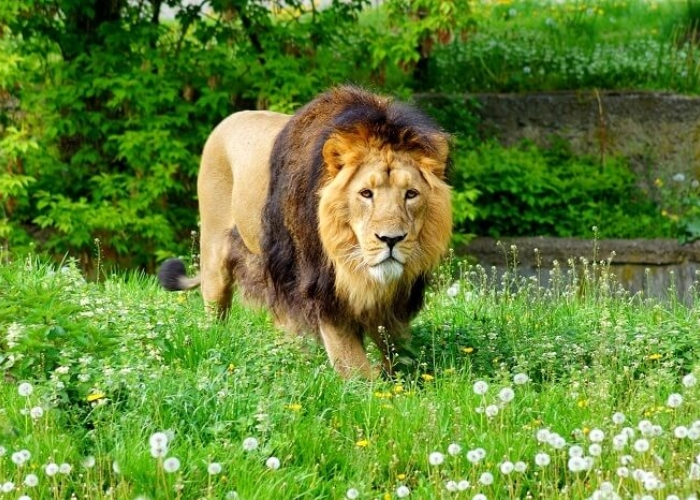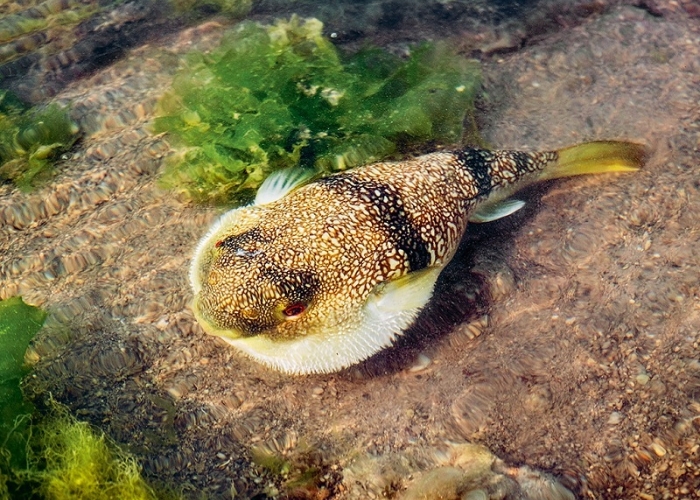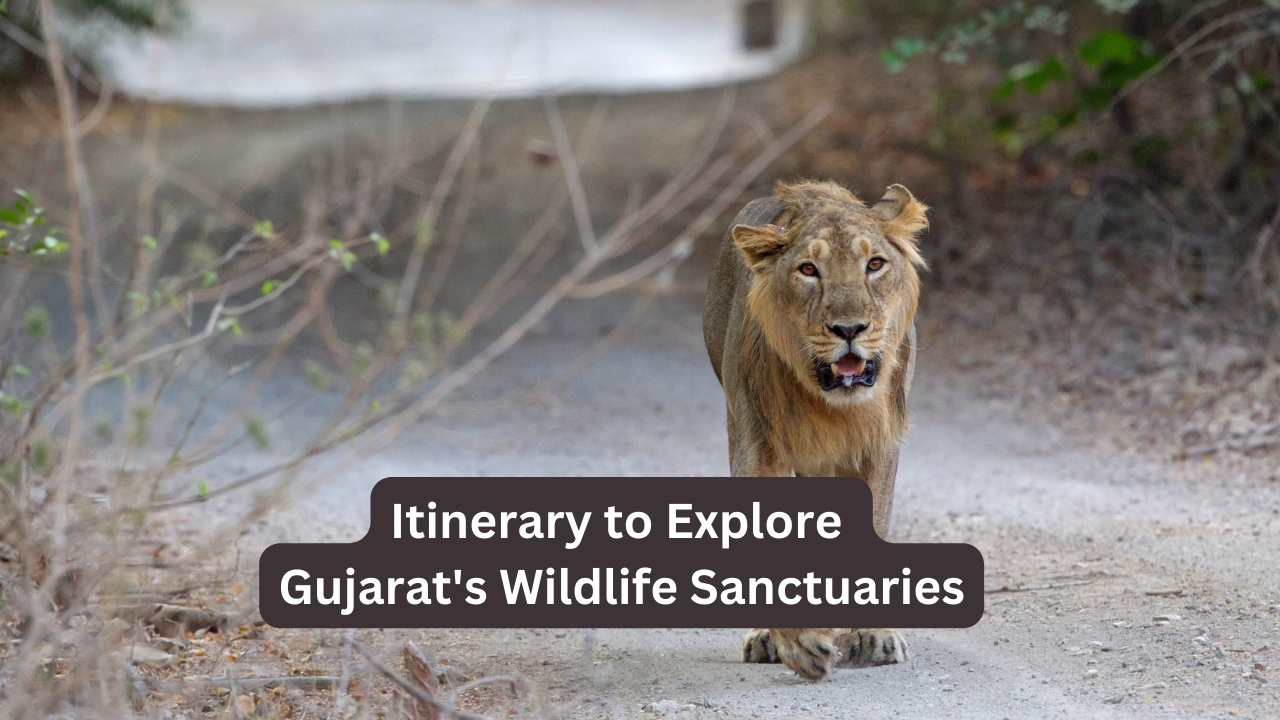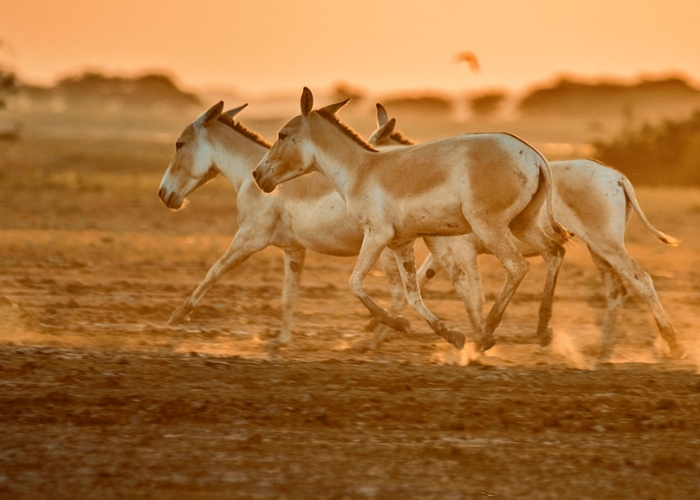Gujarat, a vibrant state on the western coast of India, is often celebrated for its rich cultural heritage, historical landmarks, and thriving industries. However, nestled within its diverse landscapes are some of the most remarkable wildlife sanctuaries in the country. These sanctuaries, brimming with biodiversity, offer a sanctuary for wildlife enthusiasts, nature lovers, and anyone seeking a tranquil escape into the heart of nature. Join us as we embark on a journey through the captivating wilderness of Gujarat’s wildlife sanctuaries.
Gir National Park: The Last Refuge of the Asiatic Lion
Journey begins with the crown jewel of Gujarat’s wildlife sanctuaries, the Gir National Park. Located in the southwestern part of the state, this sanctuary is globally renowned as the last abode of the majestic Asiatic lion. Spanning over 1,400 square kilometers, Gir National Park is a haven for wildlife, offering a unique ecosystem that supports a diverse array of flora and fauna.
A Day in Gir

Imagine waking up to the calls of peacocks and the rustling of leaves as the sun rises over the Gir forest. The air is crisp, and the excitement is palpable as you prepare for an early morning safari. As you venture into the heart of the park, the dense foliage gradually gives way to open grasslands and rugged hills. The anticipation builds as your experienced guide narrates tales of the lions that roam these lands.
Suddenly, the jeep halts. In the distance, a pride of lions, with their golden manes glistening in the sunlight, emerges from the bushes. The sight is awe-inspiring, a reminder of nature’s grandeur and the importance of conservation efforts. Gir is not just about lions; it’s home to leopards, deer, antelopes, and over 300 species of birds, making every safari a unique adventure.
Conservation Success Story
Gir National Park’s success story is a testament to dedicated conservation efforts. From a mere 20 lions in the early 20th century to over 600 today, the park is a beacon of hope for wildlife conservationists worldwide. The local Maldhari community, who coexist harmoniously with the wildlife, play a crucial role in this success. Their traditional knowledge and sustainable practices have contributed significantly to preserving this unique ecosystem.
Blackbuck National Park: The Graceful Dancers of Velavadar
The serene landscapes of Velavadar, home to the Blackbuck National Park. Nestled between the Bhavnagar and Ahmedabad districts, this park is renowned for its population of blackbucks, one of the most elegant antelopes in India. The park’s flat, grassland terrain, interspersed with patches of dry deciduous forests, creates a picturesque setting for wildlife enthusiasts.
The Blackbuck Experience

Visiting Blackbuck National Park feels like stepping into a different world. As you drive through the open grasslands, the sight of blackbucks leaping gracefully across the landscape is nothing short of mesmerizing. Their spiraled horns and striking black-and-white markings add to their allure. Watching these creatures, often referred to as the “dancers of the grasslands,” is a reminder of the delicate beauty that nature offers.
The park is also a haven for birdwatchers, with numerous species of birds, including harriers, eagles, and storks, making it their home. The wetlands within the park attract a variety of waterfowl, adding to the diversity of avian life. A visit to Velavadar is incomplete without capturing the vibrant sunsets, where the golden hues of the sky blend seamlessly with the vast grasslands, creating a breathtaking panorama.
Conservation Challenges
While Velavadar is a sanctuary for blackbucks, it faces its own set of challenges. Human-wildlife conflict, habitat degradation, and climate change pose significant threats to the park’s delicate ecosystem. However, concerted efforts by the Forest Department and local communities aim to mitigate these challenges through habitat restoration, anti-poaching measures, and community engagement programs.
Marine National Park: Exploring the Underwater Wonderland
From the grasslands, we now venture to the coastal beauty of Gujarat, where the Marine National Park awaits. Located in the Gulf of Kutch, this unique sanctuary is India’s first marine national park, encompassing 42 islands with rich coral reefs, mangroves, and diverse marine life. The park offers a rare opportunity to explore the underwater wonders of the Arabian Sea.
A Marine Adventure

Embarking on a marine safari is an experience unlike any other. As you board a boat and sail through the crystal-clear waters, the vibrant marine life beneath the surface captivates your senses. The coral reefs, teeming with colorful fish, crustaceans, and mollusks, create a mesmerizing underwater spectacle. Snorkeling and diving are popular activities, allowing you to get up close with marine species like starfish, sea cucumbers, and even dolphins.
The islands within the park are equally enchanting. Narara Island, for instance, offers a unique walking tour during low tide, where you can observe marine life in shallow pools. The island’s mangrove forests are a critical habitat for various bird species, making it a birdwatcher’s paradise. The Marine National Park is not just about the sea; it’s a holistic ecosystem where land and water coexist harmoniously.
Conservation and Community
The Marine National Park faces significant conservation challenges, including coral bleaching, pollution, and overfishing. Collaborative efforts between the government, NGOs, and local communities are essential to protect this fragile ecosystem. Community involvement, particularly among fishing communities, plays a pivotal role in sustainable fishing practices and marine conservation initiatives.
Wild Ass Sanctuary: The Unique Charm of Little Rann of Kutch
Our journey continues to the unique and captivating landscapes of the Little Rann of Kutch, home to the Wild Ass Sanctuary. Spanning over 5,000 square kilometers, this sanctuary is the last refuge of the Indian wild ass, also known as the Khur. The vast salt marshes and arid grasslands create a surreal environment, offering a stark contrast to the other sanctuaries in Gujarat.
The Wild Ass Encounter
A visit to the Wild Ass Sanctuary is an exploration of contrasts. The seemingly barren landscape comes alive with wildlife, particularly the Indian wild ass, which roams freely in large herds. These hardy creatures are well-adapted to the harsh conditions of the Rann, showcasing resilience and grace as they traverse the salt plains. Observing them in their natural habitat is a humbling experience, a reminder of nature’s adaptability.
The sanctuary is also home to various other species, including desert foxes, jackals, and numerous bird species. The winter months attract a plethora of migratory birds, transforming the Rann into a vibrant birdwatching destination. Flamingos, pelicans, and cranes can be seen in large numbers, adding color and life to the stark white landscape.
Click below to read in detail about this place :
https://www.gujarattourism.com/saurashtra/surendranagar/wild-ass-sanctuary-in-little-rann-of-kutch1.html
The Rann’s Unique Ecosystem
The Little Rann of Kutch is a unique ecosystem that undergoes dramatic transformations with the seasons. During the monsoon, the area is submerged in water, creating temporary wetlands that attract a variety of waterfowl. As the water recedes, it leaves behind nutrient-rich soil, supporting a burst of vegetation that sustains the wildlife. This dynamic environment requires adaptive conservation strategies to address the seasonal challenges and ensure the survival of its inhabitants.
Nalsarovar Bird Sanctuary: A Haven for Avian Enthusiasts
Our final destination takes us to the tranquil waters of Nalsarovar Bird Sanctuary, a paradise for bird lovers. Located near Ahmedabad, this sanctuary encompasses a large lake and surrounding marshlands, providing a critical habitat for migratory and resident birds. Nalsarovar is one of the largest bird sanctuaries in India, attracting birdwatchers from across the globe.
The Avian Spectacle

Nalsarovar is a symphony of colors and sounds, particularly during the migratory season from November to February. As you glide across the lake in a traditional wooden boat, the sight of thousands of birds taking flight is a breathtaking spectacle. Pelicans, flamingos, herons, and ducks are just a few of the many species that call Nalsarovar their temporary home.
The sanctuary’s serene environment offers an ideal setting for birdwatching and photography. Early mornings and late afternoons are the best times to witness the avian activity, as the birds feed and interact in the tranquil waters. The nearby marshes and grasslands also provide excellent opportunities for spotting raptors and waders.
Conservation Efforts
Nalsarovar faces several conservation challenges, including water pollution, habitat degradation, and human disturbance. Efforts to protect this vital ecosystem involve regulating boat traffic, monitoring water quality, and engaging local communities in conservation activities. Educational programs and eco-tourism initiatives aim to raise awareness about the importance of preserving this avian haven.
Embracing the Wildelife
As our journey through Gujarat’s wildlife sanctuaries comes to an end, it’s evident that each sanctuary offers a unique glimpse into the state’s rich biodiversity. From the regal Asiatic lions of Gir to the graceful blackbucks of Velavadar, the vibrant marine life of the Gulf of Kutch to the resilient wild asses of the Little Rann, and the avian wonders of Nalsarovar, Gujarat’s wildlife sanctuaries are a testament to nature’s splendor and resilience.
Gujarat’s wildlife sanctuaries are more than just destinations; they are living, breathing ecosystems that reflect the delicate balance of nature. and you can visit Gujarat Tourism Official Website to explore such more places in Gujarat.

